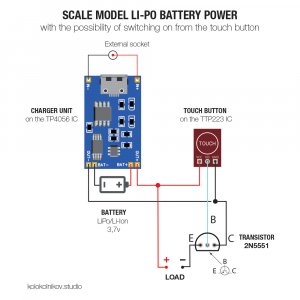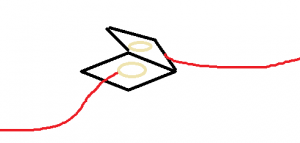Didn't find the correct section to post this thread, posting here because this section is more close to the post theme. May be need new section on the forum, like a "Electronics for models", or somthing like this.
In this circuit I used:
the cheapest touch sensor on a TTP223. (7$ for 30 pc on Amazon).
One 2Т5551 transistor,
TP4056 crarger unit (10$ for 20 pc on Amazon),
and Li-Po Battery 3.7 v 400mA
But since it is the cheapest button, it cannot pass high currents through itself. Therefore, I decided to use a transistor switch to bypass the button.
Below is the connection circuit diagram, not in the usual form, it is easier to read for those who do not know how to read classic circuit diagrams.
The touch button works great through 1.5mm laminated cardboard and acrylic paint.

In this circuit I used:
the cheapest touch sensor on a TTP223. (7$ for 30 pc on Amazon).
One 2Т5551 transistor,
TP4056 crarger unit (10$ for 20 pc on Amazon),
and Li-Po Battery 3.7 v 400mA
But since it is the cheapest button, it cannot pass high currents through itself. Therefore, I decided to use a transistor switch to bypass the button.
Below is the connection circuit diagram, not in the usual form, it is easier to read for those who do not know how to read classic circuit diagrams.
The touch button works great through 1.5mm laminated cardboard and acrylic paint.



